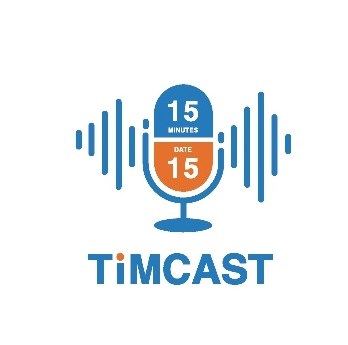One Order: The proof of the pudding is in the eating
NDC has transformed airline distribution. Well, while that particular statement can be debated for many hours, one thing that can be said is that it has changed the vocabulary of airline distribution. The mindset of airline distribution has genuinely been transformed to think in terms of “offers” and “orders”, about APIs and dynamic bundles and so on. Indeed, many airlines are implementing these concepts in their distribution landscape.
But what has really changed, beyond some terminology? Well, for certain, airlines are thinking much more like retailers. They are thinking about the customer (purchasing) experience, products, bundles, segmentation, and they are thinking about how to get these into their distribution channels as offers – through NDC and their digital direct channels. The transformation of an offer into a sale of products is resulting in the creation of orders. However, most orders still rely on a system which also uses legacy artefacts such as PNRs, tickets and EMDs.
As airlines become more retail-focussed, more confident in their capabilities as retailers and more well-equipped with tools to enable this, the more creative and ambitious airlines will become. More products in bundles, different products in different markets, integrations with providers of travel-related services that see the market developing as the technical obstacles of legacy artefacts are steadily removed from the equation. This gentle transformation is also driving changes elsewhere throughout airline organisations, as the knock-on effects of these begin to be noticed. Orders created within an order management system provide a vehicle for simplified settlement processes between sales channels (retailers) and the airlines as sellers. While the full complexity of airline revenue accounting, proration, BSP and other settlement flows cannot be eliminated overnight, the ONE Order accounting standards are enabling change. As the maturity of NDC distribution increases and orders become more prevalent, airline IT providers are presented with opportunities to bring further simplification, leveraging NDC and ONE Order. Providers of Order Management Systems (OMS) are now able to integrate directly with airline accounting systems in real-time, bypassing much of the legacy complexity associated with PNRs, tickets and EMDs.
However, there is more to being a successful airline retailer than creating offers, converting them into orders and feeding the fruits of these sales into the airline’s financial systems. At some point in time, there will be a customer who has expectations based on their wider retail experiences. The retail possibilities that airlines are now becoming exposed to go far beyond their own domain. While the additional bag will (hopefully) be visible at the time of check-in, and the lounge may be run by the airline, what about the pre-booked parking, fast-track security or the express train to the airport? The airline is unlikely to be the entity responsible for delivering the service in these cases, but the expectations of the customer are the same as when they present at the desk to drop off their bag – it should just work. However, interacting with all these new parties to ensure “it just works” is unchartered territory for many airlines. More and more, this involves pushing an order notification to the external service provider via the OMS to fulfil a service. Interactive two-way messaging related to order fulfilment is new. And, in the envisaged world where the PNR and ticket are superfluous, even the interactions with the check-in providers need to be brought into the era of APIs and open integration standards.
In conjunction with airlines, vendors and other industry stakeholders, IATA has anticipated this and has developed a set of standards within the ONE Order framework to enable the delivery of services using orders. These messages can be used by an OMS to trigger the delivery by pushing information to the responsible party or can be used by delivery providers to pull the necessary information proactively. They can track consumption of services as well, which is key to triggering accounting and settlement processes. However, certification for ONE Order capabilities is still very light compared to NDC. While the certifications only may only be taken as a loose measure of maturity, it would appear that there may be a vast gap between what airlines can now sell and what (or rather how) they can deliver.
The reasons for this apparent mismatch are manifold and varied in their nature (technical, process-related, commercial), and some may be easier to resolve than others. What is more concerning though is the apparent lack of awareness of this mismatch among the broader industry. Great focus has been placed on promoting the need for modernisation in how airlines define and sell their products and services. However, there is still one key component that will become a challenge sooner rather than later – where the customer gets to seamlessly experience all those products and services that the airline invested so much effort in to get the customer to purchase.
The collaboration between airlines and their OMS partners is, generally speaking, mature, collaborative and based on a common understanding of business value and goals. The relationship between airlines and their ground handling partners is of a very different, operational nature and is often very cost-driven to extract the maximum value at the lowest cost. On the other hand, the relationship between OMS providers and ground handlers is non-existent in most cases.
Planning and executing the smooth delivery of products is key to being a successful retailer. Achieving this requires close alignment between all stakeholders: airlines, their OMS providers and crucially, the ground handlers and other partners, in and around the airport, in the air or wherever else they may be. So far, the focus has been on the selling aspect of retailing and increasing revenue and airline wallet share. However, if airlines are really to succeed as retailers, customer satisfaction will be determined by what, and how, they deliver. The proof of the pudding is in the eating.
This post has been published in collaboration with Terrapinn.
(Nick Stott, 7. June 2022)
 |
If you are interested in a deeper discussion about this topic: Listen to our latest TiMCAST 15 on 15 where Jost Daft of LH Group shares his views on the subject. |

